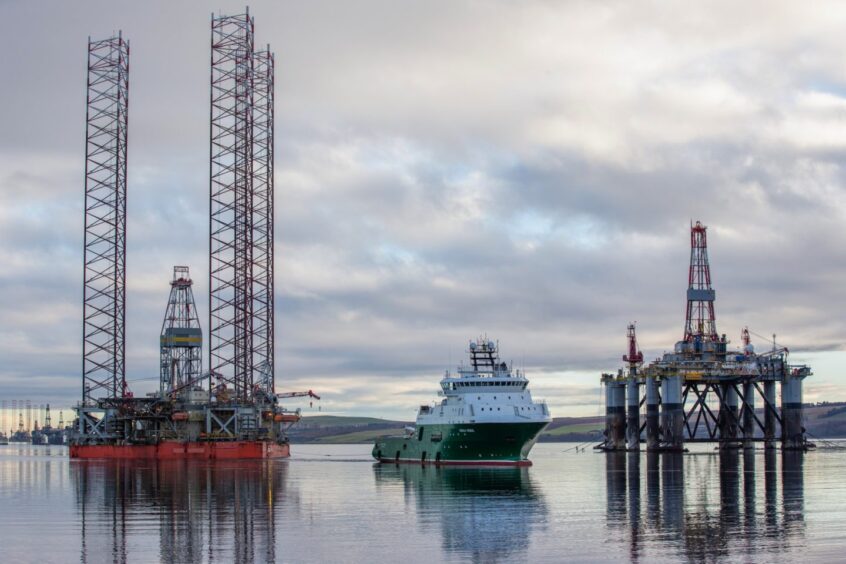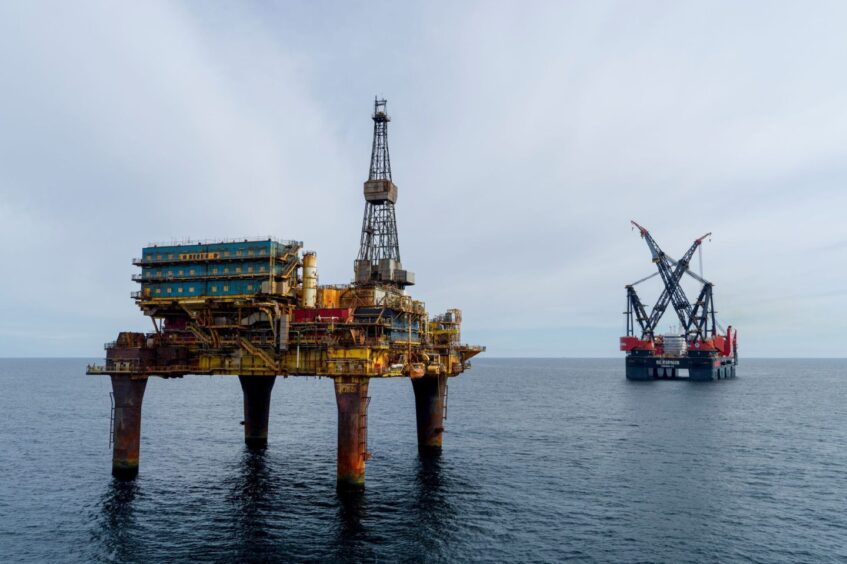
Amid ongoing uncertainty around tax, inflationary costs and supply chain availability, the North Sea’s regulator has written to operators impressing the need to maintain their commitments with regard to timely well decommissioning.
Speaking with Energy Voice, the North Sea Transition Authority’s (NSTA) head of decommissioning Alastair Bisset said the regulator had reached out to operators in a November letter to make clear its expectations around well plugging and abandonment (P&A).
The letter, signed by the organisation’s decom and supply chain head Pauline Innes, includes a reminder of obligations to meet agreed cessation of production (CoP) dates and the need for a proactive response. It notes that the NSTA will “generally consent” to an initial suspension period of up to two years – shorter or longer in “exceptional circumstances” – but will not exceed five years.
“A lot of good work’s been done over the years, but we are seeing a little bit of a trend this year where a little bit of a follow-up [is needed],” Mr Bisset explained.
“Given some of the potential market constraints in the coming years and some of what we’re seeing from the supply chain, we want to make sure that there’s a reiteration of the messaging in terms of what we expect and what we’re looking to see.”
It comes amid a “huge volume” of over 2,000 wells expected to be decommissioned over the next decade, with NSTA forecasting around 250 per year in 2024 and 2025 in its latest Wells Insight Report.
Meanwhile, the NSTA’s forecast for the total cost of cleaning up the basin rose to £40bn on the back of inflationary pressure, though it remains confident it can meet a recently re-baselined target to reduce this to around £33.3bn by 2028.
At the same time, however, Mr Bisset and his team see a potential uptick in operators looking to extend deadlines on currently suspended wells as they attempt to navigate market uncertainties.
Indeed, some licensees have reportedly cited the effects of the Energy Profits Levy (EPL) on their plans and sought to respond by pushing CoP dates back – something which the NSTA is keen to avoid.
“It’s really just reminding them what we expect and highlighting that we’re not really inclined to push dates further out,” he continued.
“We want to and expect to see more of a plan for how people are going to meet these obligations, rather than just a date in the sand.
“That being said, we are closely working with operators to see where there’s challenges that they’re facing, and where there’s opportunities for campaigning or other things we will obviously listen to and work with them.”
Supply chain shown ‘real work and real activity’
One solution it hopes will aid that approach – both for asset owners and the supply chain – is the next stage of a visibility dashboard piloted in 2021.
Three pilot-stage operators (BP, EnQuest and Spirit Energy) have now swelled to 14, all of whom have committed to the NSTA sharing more information on their decommissioning activities and plans to help supply chain and service providers invest.
By showing “real work and real activities” and likely dates for execution, the hope is it will add further weight and visibility to potential campaigning opportunities, complementing its existing Pathfinder database.
The reiteration of well commitments comes as the NSTA consults the sector on wider proposals to ensure basin-wide emissions targets are met.
Included in those are new proposals on ‘inventory’ – the profile and number of assets in operation – in which it suggests close attention will be paid to CoP dates for older and high-emitting installations.
“We’ve worked really proactively with industry over recent years we’ve seen great examples of campaigning and collaboration but we do still want to be firm and ensure that wells dates are met,” he said.
“Where people see opportunities for significant cost savings and efficiencies, we’re absolutely going to listen to and engage with them on those.
“But where we don’t see that or we think those have been exhausted for particular fields, we need to make sure that we’re that we’re still being firm but fair in terms of our commitments on the wells front.”
Securing rig capacity
Another concern raised by rig owners has been the potential outflow of units from the North Sea as rigs are snapped up for more lucrative or more predictable work elsewhere.
Mr Bissett says the NSTA is not yet concerned about short-term availability, but hopes its reminder around well P&A commitments will also help secure regional demand.
“There’s certainly availability of rigs for the moment that we see leading into 2024 and that ties into what we’re expecting industry to fulfil their obligations on wells P&A, because there is capacity,” he added.
“Beyond that, I think we are starting to see some contracts and some commitments firm up…so my perception is really ensuring that we can utilise the available capacity over the coming year and then have those rigs active and still available to undertake a huge amount of work ahead and many contracts that are being looked that in place for 2025 onwards.”
He suggested there is an understanding amongst operators that longer contracts and campaigns are seen as “a lot more beneficial” to rig providers and can help secure domestic availability.
On the cost front, while rising day rates mean there may be challenges for smaller operators and smaller well campaigns, he remains “pretty confident” that the alignment of work campaigns will allow the basin to remain competitive and meet the targeted cost estimates.
Indeed, it’s not booking work in the short term that is likely to cause problems.
“If we don’t harness those opportunities over the coming couple of years then we may have a risk with the market and it could be that either rates go up or rigs disappear,” he added – something which the NSTA is also trying to impress upon licence holders.
“Not only will doing this work meet the regulatory commitments that [operators have] committed to, but also we believe it will keep the supply chain engaged – and not only will that be good for the basin, but it will be good for those operators and JVs going forward because they’ll have that resource and that capacity still here to deliver the work that we need to do over quite a few years.”
Other fears have been raised over a potential crunch with the offshore wind sector, as both industries scramble to secure heavy lift vessel (HLV) capacity in 2024 and beyond.
On this Mr Bissett also remains sanguine, noting that licenses hold “a good understanding” of their requirements, thanks mainly to long lead times.
“I see the HLV market as having a bit more predictability to it than the rig market – it’s definitely something we need to continue to focus on but it’s something that we’re engaging with industry on and they seem to have a good grasp and a good handle of.”
Port competition
Of course, onshore assets can be just as important as offshore vessels and rigs to the decommissioning process. Yet these too face the prospect of increased competition for space and capacity, particularly around Scotland as the emergent floating offshore wind picks up.
Yet here Mr Bisset also remains confident that capacity is available.
“It would be remiss of us not to have concerns about the challenges ahead, but I think we’ve also got to focus on the successes that that we have had and the amount of work that is being undertaken,” he explained.
This too should be further aided by the tools highlighting the potential pipeline of work to supply chain providers.
“If we can show the planned years and activities that are coming with a bit more certainty, then the supply chain can look at it – including the ports – and say this is what we think is coming and when.”
And despite grumbles from some decom providers over assets being sent overseas for dismantling, the NSTA’s survey shows UK contractors continue to win work, with 75% of UKCS infrastructure by item – 51% in tonnage terms – removed between 2019 and 2022 being dismantled in domestically.
Re-use and repurpose
In many cases, decommissioning may also be secondary to re-use and repurposing opportunities.
Mr Bisset said the regulator is proactively engaging with the sector to ensure asset owners are aware of potential options – particularly around terminals, pipelines and trunk lines where he says there is “huge potential in terms of cost saving and efficiency”.
There remains a challenge in knitting together current infrastructure with future demands for hydrogen, carbon capture and other transition technologies, though doing so could yield a “huge prize.”
“What I think we’re doing quite well at the moment is for all the opportunities in the ‘glide path’ – within five to six years of COP – we are very actively engaging with those licensees looking at the reuse and repurposing potential and ensuring that that they have considered that.
“Where there is something feasible we’re doing our best to work with them and put them in touch with the relevant groups and also work internally within NSTA to make sure there’s alignment.”
In the meantime, however, the wider message is clear: any well decommissioning commitments should not be taken lightly.
Recommended for you

 © Supplied by NSTA
© Supplied by NSTA © Supplied by Heerema
© Supplied by Heerema